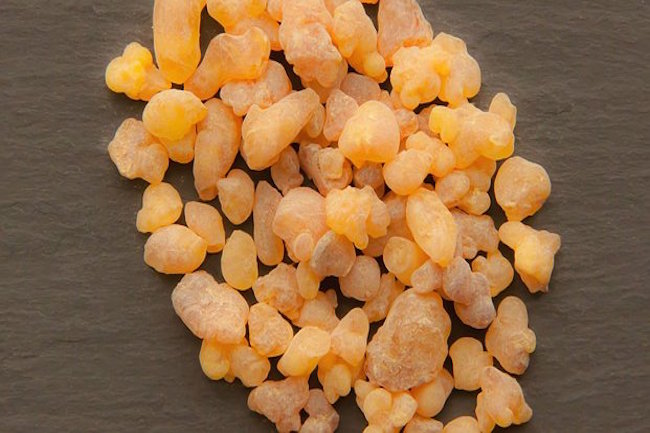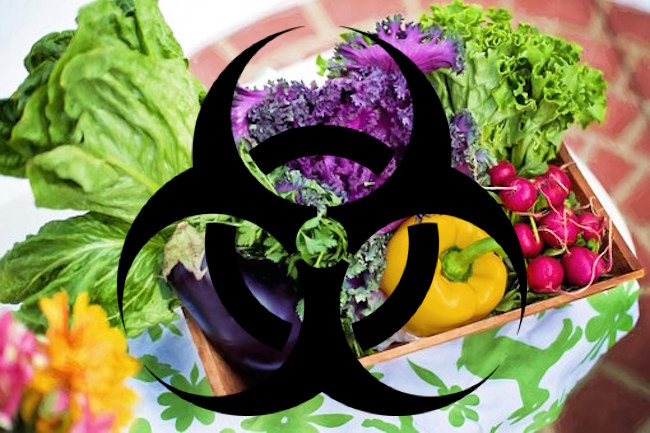Top 11 Reasons to Start Using Frankincense Oil by Dr. Joseph Mercola
STORY AT-A-GLANCE
- Essential oils carry biologically active volatile compounds in a highly-concentrated form that can provide therapeutic benefits in very small amounts
- Frankincense essential oil — commonly referred to as the King of Oils — is made from the resin of either the Boswellia sacra or Boswellia carterii tree
- Frankincense essential oil is pale yellow-green with a woody, earthy and spicy aroma. Traditionally used in many religious holy rites, it is also commonly used as an ingredient in perfumes and skin care products
- Substances found in frankincense essential oil have been scientifically shown to speed wound healing, reduce inflammation and stress, boost immune function, improve oral and uterine health, treat respiratory issues and digestive disorders, promote sleep and fight cancer
- Several studies have demonstrated that alpha-pinene, a bioactive ingredient in frankincense oil, induces cell death in cancer cells, including malignant melanoma cells, breast cancer and pancreatic cancer cells
This article was previously published January 10, 2019, and has been updated with new information.
Scents can have a powerful influence on your well-being. Aromatherapy, which uses concentrated essences of various botanicals, allows you to harness the olfactory power of plants for healing on many levels. Essential oils carry biologically active volatile compounds in a highly-concentrated form that can provide therapeutic benefits in very small amounts.
There are hundreds and many thousands of essential oils available if you factor in combinations, each with its own potential benefits. That said, one essential oil that stands out above the crowd is frankincense essential oil — commonly referred to as the King of Oils — made from the resin of either the Boswellia sacra or Boswellia carterii tree.
Boswellia trees grow in African and Arabian regions, including Yemen, Oman, Somalia and Ethiopia. The oil is pale yellow-green with a woody, earthy and spicy aroma. Frankincense oil is traditionally used in many religious holy rites, and as an ingredient in perfumes and skin care products.
Composition of Frankincense Oil
Its main chemical constituents are alpha-pinene, octanol, linalool, octyl acetate, bornyl acetate, incensole and incensyl acetate. Monoterpenes and sesquiterpenes are thought to be the most valuable elements of frankincense oil.
Monoterpenes work in the liver and kidneys, and lower cholesterol activity in the liver.1 Some monoterpenes have antiseptic, antibacterial, antiviral, antitumor2 and expectorant3 properties.
Sesquiterpenes may cross the blood-brain barrier, as seen in this 2013 animal study,4 and help stimulate the limbic system, aka the emotional center, of your brain. This stimulates secretions of antibodies, serotonin, endorphins and neurotransmitters which can influence your mood and emotions.5
Quality frankincense oil is nontoxic and generally nonirritating.6 That said, it’s always best to perform a skin test before using it undiluted on your body. Should any irritation occur, be sure to dilute it with a carrier oil.
Health Benefits of Frankincense Oil
Anecdotally, many swear by its healing powers, and substances found in frankincense essential oil — such as alpha-pinene and boswellic acid — have been scientifically shown to impart a number of health benefits, including:7
- Speeding up wound healing8
- Fight the appearance of stretch marks, age spots and wrinkles9
- Reducing inflammation and inflammatory conditions such as rheumatoid arthritis10 and bronchial asthma11,12
- Reducing stress hormones13,14
- Boosting immune function15,16
- Improving oral health by preventing bad breath, cavities, toothaches, mouth sores and other infections17,18
- Supporting uterine health in women by regulating estrogen production. It also helps regulate the menstrual cycle in premenopausal women19
- Treating respiratory issues such as colds, allergies, asthma and bronchitis by reducing phlegm buildup and congestion20
- Promoting sleep21
- Improving digestion and treating digestive disorders such as chronic colitis, ulcerative colitis and Crohn’s disease22
- Fighting cancer23,24,25,26,27,28
Frankincense is also one of the best oils to use for the removal of skin tags. One recent study29confirmed that frankincense essential oil is bioactive and affects human gene expression, upregulating at least 42 and downregulating 41 genes, stating that “Many of these signaling pathways are closely related to the biological processes of inflammation, immune response, and tissue remodeling in human cells.” The researchers also noted that:
“Alpha-pinene, the top constituent of FREO [frankincense essential oil], is widely recognized as the major anti-inflammatory component of FREO. Alpha-pinene showed anti-inflammatory properties in human peripheral blood mononuclear cells and mouse macrophages through inhibition of tumor necrosis factor-α, interleukin-1β, nitric oxide, and mitogen activated protein kinases.
An in vitro study showed that isolated alpha-pinene had the ability to reduce the expression of pro-inflammatory cytokines. Another study found that alpha-pinene inhibited the nuclear translocation of NF-kB induced by lipopolysaccharide in THP-1 cells, explaining its benefits in the treatment of upper and lower airway diseases.
Recent research has also provided evidence that alpha-pinene has some immune-enhancing properties, particularly regarding enhanced T-cell activity.
In two related studies, the effects on human immune function of essential oils from trees were investigated. In both studies,30,31 it was found that exposure to alpha-pinene increased T-cell activity and decreased stress hormone levels.”
Frankincense Exhibits Cancer Cell-Specific Cytotoxicity
While research is still scarce, a small number of studies have looked at frankincense oil’s anticancer potential, finding positive results. For example:
• A 2011 study32 looking at alpha-pinene’s effect on malignant melanoma, the most aggressive and dangerous form of skin cancer, found alpha-pinene induced apoptosis in melanoma cells. According to the authors:
“Our results demonstrated that α-pinene was able to induce apoptosis evidenced by early disruption of the mitochondrial potential, production of reactive oxygen species, increase in caspase-3 activity, heterochromatin aggregation, DNA fragmentation and exposure of phosphatidyl serine on the cell surface.
Most importantly, this molecule was very effective in the treatment of experimental metastatic melanoma reducing the number of lung tumor nodules. This is the first report on the apoptotic and antimetastatic activity of isolated α-pinene.”
• That same year, another study33 found Boswellia sacra essential oil induces tumor cell-specific apoptosis in human breast cancer cells and suppresses tumor aggressiveness. Here, the authors noted that:
“More abundant high molecular weight compounds, including boswellic acids, were present in Boswellia sacra essential oil prepared at 100°C hydrodistillation. All three human breast cancer cell lines were sensitive to essential oil treatment with reduced cell viability and elevated cell death, whereas the immortalized normal human breast cell line was more resistant to essential oil treatment.
Boswellia sacra essential oil hydrodistilled at 100°C was more potent than the essential oil prepared at 78°C in inducing cancer cell death, preventing the cellular network formation … causing the breakdown of multicellular tumor spheroids … and regulating molecules involved in apoptosis, signal transduction and cell cycle progression.
Similar to our previous observations in human bladder cancer cells, Boswellia sacra essential oil induces breast cancer cell-specific cytotoxicity.
Suppression of cellular network formation and disruption of spheroid development of breast cancer cells by Boswellia sacra essential oil suggest that the essential oil may be effective for advanced breast cancer. Consistently, the essential oil represses signaling pathways and cell cycle regulators that have been proposed as therapeutic targets for breast cancer …”
• In 2012, researchers found34 frankincense essential oil made from Boswellia sacra induces cell death in human pancreatic cancer cells as well.
• A study35 published in 2014 reported that frankincense essential oil selectively induced apoptosis in cancer cells via NRF-2-mediated oxidative stress.
How to Use Frankincense and Other Essential Oils
Essential oils can be used in a number of different ways. For example, you can:
- Add a drop or two to a teaspoonful of your favorite carrier oil; moringa oil and coconut oil are just two examples of many
- Add a few drops of the essential oil to your bath to create an aromatic soak. Your body may also absorb some of the oil. To prevent the oil from separating and floating on the surface of the water, first mix the oil with a small amount of full-fat milk
- Apply a drop or two of frankincense on your pulse points during meditation or yoga. Keep in mind that while frankincense can be used neat (undiluted), other oils must be diluted with a carrier oil before applying to your skin
- Apply a few drops of oil to a hot compress
- Diffuse the oil in a diffuser or vaporizer made specifically for essential oils (do not add to standard humidifiers)
Quality Is of the Essence
When it comes to essential oils, quality is paramount. First of all, what we’re talking about here is pure, therapeutic grade essential oils from plants, not synthetic fragrance oils or perfumes, which can be toxic and typically contain allergenic compounds.
But even among essential oils the quality can vary widely, and assessing the quality of any given brand can be difficult, as factors such as growing conditions and methods of harvesting, distillation, manufacture and storage can all affect the final product.
Boswellia trees can produce different colored resins. Brown-yellow and muddy frankincense are touted as the cheapest and most readily accessible, while silver and clear frankincense are considered high-quality. The University of Minnesota36 offers helpful guidance regarding international standard-setting agencies and considerations to take into account when looking for an essential oil.
One of the most important considerations is to look for a statement of purity. What you’re looking for is 100 percent essential oil (meaning it has not been diluted, altered or mixed with anything else). Price can be a tipoff. If it’s really cheap, it’s probably a reflection of poor quality.
Improve Your Health With Frankincense Essential Oil
Frankincense oil is probably one of the safest and most beneficial essential oils you can use to support your health. It may also be a good choice if you want to improve your prayer or meditation sessions, as it helps promote feelings of peace, comfort and relaxation, as well as combating stress.
Despite its safety, it may not be suitable for everyone. If you experience any kind of adverse reaction, stop using it. Always do a small skin patch test before using on larger areas of your body, and dilute if needed.
According to the National Association for Holistic Aromatherapy, frankincense essential oil diluted with a carrier oil is safe to use during pregnancy, and Autism Parenting magazine recommends it for children on the autism spectrum and/or for those with attention deficit hyperactivity disorder.37Using Essential Oils Safely38 also lists frankincense as an essential oil safe to use for children.
That said, according to RxList,39 frankincense oil may cause diarrhea, nausea, stomach pain and rash. There are also indications that boswellia may have blood-thinning effects, and also can interfere with prescription anticoagulants such as warfarin,40 so people with blood clotting issues should use it with caution.




